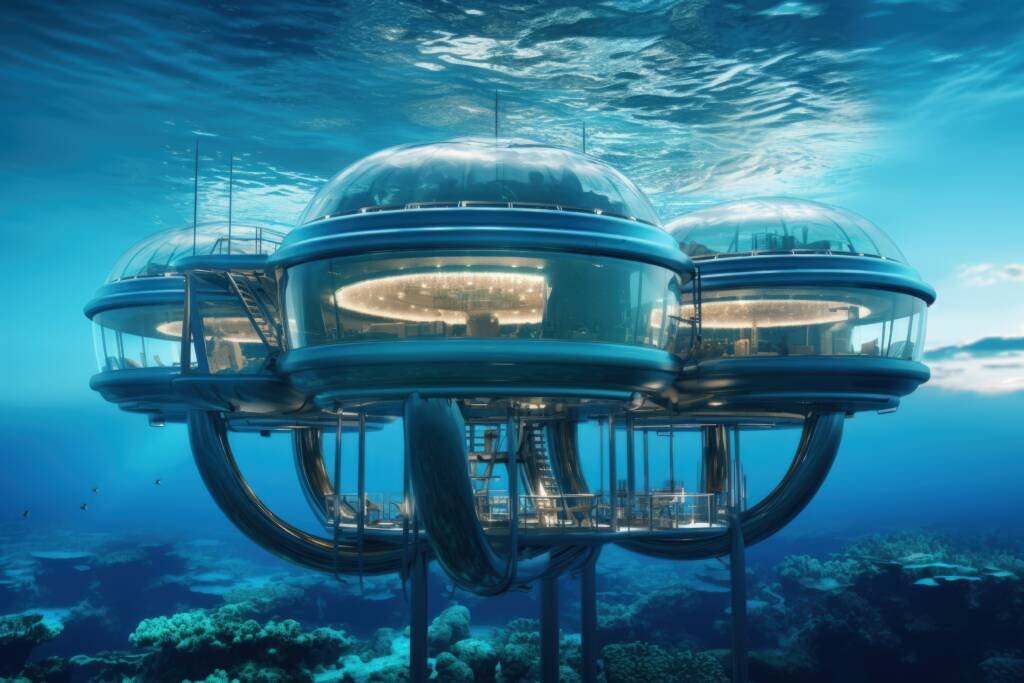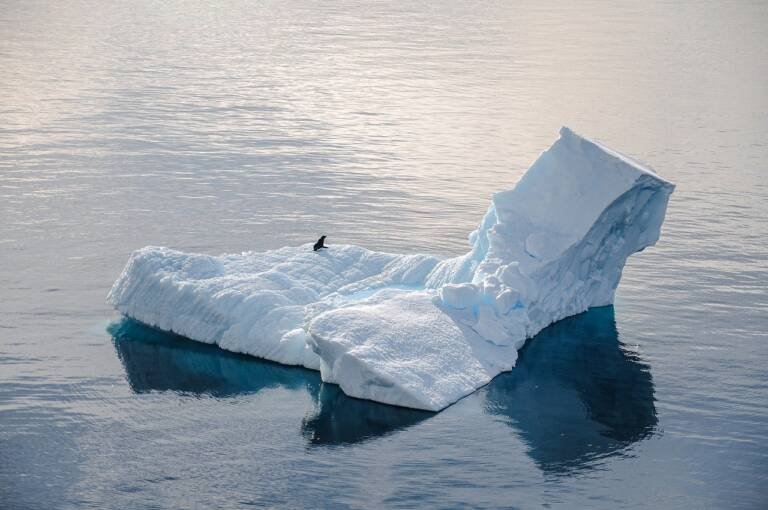Japanese Underwater Aircraft Carrier : A Fascinating Piece of Naval History
Introduction
During World War II, the Imperial Japanese Navy (IJN) developed a unique and innovative concept: submarine aircraft carriers. These underwater vessels were designed to carry seaplanes, allowing them to launch aerial attacks while submerged. Although they had little impact on the overall war effort, these submarines remain a fascinating chapter in naval history.
Development and Deployment
The IJN built a total of 42 (some sources say 47) submarine aircraft carriers. Here are some notable types:
- Type J1M Scouting Submarine (I-5):
- The first IJN submarine to carry a floatplane.
- No catapult; the I-5 aircraft was assembled on deck and lowered into the water for takeoff.
- Had two hangars.
- Type J2 Scouting Submarine (I-6):
- Carried one floatplane.
- Type J3 Scouting Submarines (I-7 and I-8):
- Carried one floatplane each.
- Fitted with a fixed catapult aft and twin hangars.
- I-8 completed a round-trip voyage between Japan and Europe during WWII.
- Type A1 Headquarters Submarines (I-9, I-10, I-11):
- Carried one floatplane each.
- Two more were canceled in 1942.
- Type A2 Headquarters Submarine (I-12):
- Carried one floatplane.
- Hangar and catapult fitted forward.
- Type AM (A Modified) Aircraft Carrying Submarines (I-13, I-14):
- Carried two floatplanes.
- Catapult forward.
- Two were not completed, and three more were canceled.
- Type B1 Scouting Submarines (I-15 through I-39):
- Carried one floatplane each.
- Hangar and catapult fitted forward.
- I-25 launched the only plane that made an aerial bombing of the USA during wartime.
- Type B2 Scouting Submarines (I-40 through I-45):
- Carried one floatplane each.
- Hangar and catapult fitted forward.
- Numbers 702 through 709 were canceled.
- Type B3/B4 Scouting Submarines (I-54, I-56, I-58):
- Carried one floatplane each.
- Hangar and catapult forward.
- I-58 had its aircraft and catapult replaced by Kaiten suicide torpedoes.
- I-400-Class Submarines (I-400, I-401, I-402):
- Carried three floatplanes each.
- Specifically designed to launch floatplane bombers against the Panama Canal.
- Two were not completed, and others were canceled.
The I-400: An Underwater Aircraft Carrier?
The I-400, the largest submarine ever built during WWII, was a marvel of engineering. Its mission was to approach the United States mainland undetected, surface, and launch attack aircraft to destroy valuable targets on land. After completing its mission, the submarine would slip away, leaving the Americans baffled.
The Discovery of japanese underwater aircraft carrier

In a remarkable feat of underwater archeology, Japan’s innovative maritime technology from World War II was brought back into the limelight with the discovery of one of its most ambitious projects – the I-400 class underwater aircraft carrier. This discovery not only spotlights Japan’s brilliant minds but also serves as a tangible relic of the country’s technical advancements during a tumultuous era in history.
Historical Significance
The I-400 class submarines represent a bold step in naval warfare, embodying Japan’s strategic innovation and technological prowess. Developed and deployed during the latter stages of World War II, these colossal vessels were crafted as a direct response to the Allied powers’ dominance at sea, particularly aiming to offset the United States’ naval strengths. Although these underwater behemoths never saw combat, their very creation and intended use reflect the intensity and desperation present in wartime strategies, marking a significant chapter in military history.
A Marvel of Engineering of japanese underwater aircraft carrier
These Japanese underwater aircraft carriers were unparalleled in size and ambition. Stretching over 400 feet in length and displacing 6,500 tons, they stood as the largest submarines of their time, capable of undertaking long-range missions far from home shores. Each submarine was designed to house up to three Aichi M6A Seiran aircraft within a water-tight hangar, which could be rapidly deployed for surprise aerial attacks against distant targets.
Equipped with advanced navigation and communication technologies, the I-400 class was a formidable force capable of altering the traditional tactics of naval engagement. Their ability to clandestinely approach enemy shores and launch aircrafts underscored a shift towards more unpredictable and innovative methods of warfare.
Impact on Naval Warfare Strategies
The introduction of the I-400 class significantly influenced World War II naval strategies, presenting a new, sophisticated level of threat. The concept of air strikes originating from unseen and unexpected angles prompted a reconsideration of naval defense measures and spurred further innovations in anti-submarine warfare techniques. Although the war concluded before the I-400 class could demonstrate their full potential in combat, their development marked a pivotal moment, showcasing the pivotal role of advanced technology in shaping military tactics.
Historical Context and Legacy
Developed amidst the fierce advancements and countermeasures of World War II, the I-400 class submarines were part of Japan’s strategic initiative to extend its military reach across the Pacific, aiming to disrupt American naval operations. Despite their late entry into the war and subsequent non-combat status, these submarines serve as a testament to the innovative engineering and strategic foresight of Japan’s military leaders and engineers. They illustrate a period of fervent research and development in naval warfare, leaving a lasting impression on military strategies and technological pursuits in the years that followed.
The discovery of Japan’s underwater aircraft carrier is not just a nod to the past; it reignites discussions on the advancements in naval warfare and the lengths nations were willing to go in their quest for technological superiority during World War II. The I-400 class’s story is a fascinating glimpse into human ingenuity amid the extremities of war, highlighting a unique intersection of innovation, strategy, and historical what-ifs. Overall, the discovery of Japan’s underwater aircraft carrier serves as a poignant reminder of the profound impact of technological advancements on military history and global affairs. With ongoing research and further revelations, this piece of history will continue to provide valuable insights into the depths of human capabilities and their consequences.
Continuing the exploration of Japan’s underwater aircraft carriers brings to light the collaborative efforts between historians, archeologists, and marine scientists in uncovering the mysteries that lie beneath the waves. These multidisciplinary teams utilize cutting-edge technology, including sonar mapping and remotely operated vehicles (ROVs), to meticulously document and study the remnants of these submerged giants. Their work not only contributes to our understanding of World War II naval strategies but also advances the field of underwater archaeology, offering insights into the preservation of underwater cultural heritage. This ongoing research underscores the importance of international cooperation in safeguarding the relics of our shared history, ensuring they remain a source of knowledge and reflection for future generations.
Japanese Underwater Aircraft Carrier: Unveiling the Maritime Marvel
In the annals of military history, certain innovations stand out for their audacity and ingenuity. One such marvel is the Japanese underwater aircraft carrier, a remarkable feat of engineering born out of necessity and strategic vision. In this article, we delve into the depths of this unconventional vessel, exploring its origins, design, operational prowess, and enduring legacy.
Evolution of Underwater Aircraft Carriers
During the tumultuous years of World War II, military powers relentlessly pursued technological advancements to gain an edge on the battlefield. Among these innovations was the concept of underwater aircraft carriers, conceived as a means to surprise and outmaneuver adversaries. The Japanese, known for their bold military strategies, embraced this idea and embarked on a quest to develop a formidable underwater fleet.
Crafting the Submersible Arsenal
The design and construction of the Japanese underwater aircraft carrier represented a fusion of engineering brilliance and strategic foresight. Technical specifications were meticulously crafted to accommodate aircraft storage, launch, and retrieval while maintaining stealth and agility beneath the waves. Overcoming daunting engineering challenges, Japanese engineers devised ingenious solutions, pushing the boundaries of maritime warfare.
Naval Dominance Redefined
In the theater of naval warfare, the Japanese underwater aircraft carrier offered a distinct advantage over conventional surface vessels. Its ability to operate undetected below the surface, coupled with the element of surprise afforded by aerial attacks, revolutionized military tactics. With strategic maneuverability and unparalleled stealth, these underwater behemoths became formidable adversaries, reshaping the dynamics of maritime conflict.
Unveiling Operational Brilliance
Deployed in various theaters of war, Japanese underwater aircraft carriers proved their mettle in combat. From clandestine reconnaissance missions to daring assaults on enemy fleets, these submersible giants wreaked havoc on unsuspecting adversaries. Notable engagements underscored their combat effectiveness and strategic significance, earning them a fearsome reputation on the high seas.
Enduring Legacy and Future Horizons
Though the era of underwater aircraft carriers has faded into history, their legacy endures as a testament to human ingenuity and innovation. Lessons learned from these pioneering vessels continue to inform modern military strategies, inspiring ongoing advancements in naval technology. As the specter of maritime conflict looms in the 21st century, the legacy of the Japanese underwater aircraft carrier serves as a reminder of the enduring quest for supremacy on the high seas.
Conclusion
The discovery of Japan’s underwater aircraft carrier sheds light on a significant yet lesser-known aspect of maritime history and serves as a testament to human ingenuity and determination. It also highlights the enduring impact of technological advancements on military strategies and global affairs, sparking discussions on the ethics and consequences of unchecked innovation in times of war. As research continues, this piece of history will continue to provide valuable insights into the depths of human capabilities and their enduring legacy. So, let us not forget the lessons that can be learned from these sunken relics as we navigate through an ever-changing world. Perhaps, they hold the key to avoiding a similar fate in our future endeavors. Only time and continued research will tell.
FAQs (Frequently Asked Questions)
- Were Japanese underwater aircraft carriers actually effective in combat?
- Yes, Japanese underwater aircraft carriers proved to be highly effective, executing successful missions and engagements during World War II.
- How many Japanese underwater aircraft carriers were built?
- The Japanese constructed several underwater aircraft carriers, though the exact number varies depending on sources.
- What ultimately led to the decline of underwater aircraft carriers?
- Advances in detection technology and the evolving nature of naval warfare contributed to the decline of underwater aircraft carriers.
- Are there any modern equivalents to the Japanese underwater aircraft carrier?
- While the concept of underwater aircraft carriers has largely faded, modern submarines incorporate elements of stealth and strategic versatility reminiscent of their predecessors.
- What lessons can be gleaned from the history of Japanese underwater aircraft carriers?
- The history of Japanese underwater aircraft carriers highlights the importance of innovation, adaptability, and strategic foresight in military endeavors.
References:















